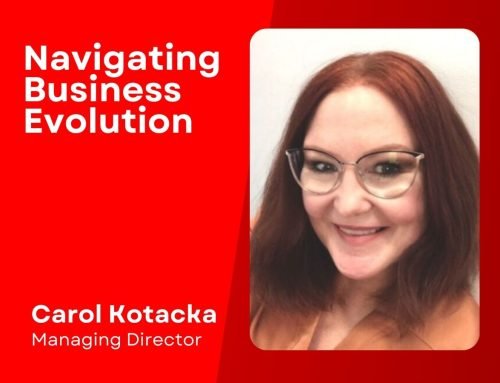‘If your organization needs to evolve … a high agency person is going to help you make that happen’: experts explain hiring and managing transformative talent in evolving workplace.’
With technology reshaping industries—with innovations like autonomous AI agents making headlines—another powerful force is at work within organizations: “high agency” employees, defined by their proactive drive and willingness to reshape their environment.
The term “high agency” has risen in popularity in the last year – according to a report byBrandwatch, last year there was a 500-per-cent rise in the use of the term on social media platforms.
Elon Musk is said to be an extreme example of a high agency individual. “They don’t accept the status quo,” says Carol Kotacka, facilitator at Queen’s University’s Industrial Relations Centre, adding these dynamic individuals offer both tremendous potential and unique challenges to HR professionals.
“They drive significant change, or they will change their environment or their organization, or the world. They’ll shape it a little bit into the way they align with their goals or their purpose,”
What is a high agency employee?
As Canadian organizations continue to evolve, the demand for high agency employees is expected to grow; the term, originated in Silicon Valley to describe entrepreneurially-minded individuals, has been popping up in other industries.
Kotacka explains that organizations undergoing transformation or seeking to reinvent themselves in an increasingly competitive market, should consider high agency employees. “If your organization needs to evolve… a high agency person is going to help you make that happen. Their inherent drive to pursue bold goals, even when faced with setbacks, is evident in their mindset,” she says. “If 10 people b efore them have failed, they don’t necessarily take that as a deterrent. They’re highly optimistic.”
Balancing risks and rewards of high agency employees
The dual-edged nature of high agency employees is a common challenge for human resources professionals. As Christian Cook, professor of human resources at Royal Roads University, explains, integrating them into existing systems requires a realistic understanding of what is needed at the time of hire and beyond.
“Are you ready for transformation?” Cook asks.
“In a lot of ways, people, organizations, leaders truly want to do something different, and we want to bring in people that are going to shake it up — and then things just get uncomfortable, and they want to revert back to where they were.”
Kotacka adds that bringing on high agency employees can be challenging – and even disruptive – for existing teams if they aren’t yet prepared to be flexible.
“They are the type that … employers either adore because they deliver every day, or they drive their employers crazy,” says Kotacka, explaining that it is not enough to simply hire high agency individuals; organizations must also be ready to empower them.
“They’re very self-driven, very self-motivated. They’re goal focused, and that goal, they’ll deliver it to you. But micromanagement is not a good fit.”
Setting clear expectations for high agency employees
One of the most critical aspects of managing high agency employees is setting accurate expectations right from the recruitment stage, says Cook, warning against the pitfalls of overpromising. The mismatch between expectations and reality can quickly erode trust and diminish the potential benefits of hiring such talent.
“I always think about the language that we’re using when we attract people to organizations, and sometimes organizations kind of overpromise to get people in the door, and then the environment there isn’t what the person is expecting or what they can flourish in,” says Cook.
“Those are cases where neither one of those parties are set up for success.”
To create an environment where high agency employees can thrive, organizations need to take a close at their existing, traditional structures. As Cook explains, if there is too much focus on strict expectations, a high agency employee may be frustrated and even leave the company.
“In an organization where we really want to have high agency people, and we are committed to seeing them flourish … there can’t be punishment for not checking in with your boss every single morning and not providing a written report at the end of every week. There can’t be punishment for that,” Cook says.
When expectations are not met, high agency employees may be adversarial, which can disrupt team cohesion and productivity.
Depending on market conditions and what options might just pack it in,” he says.
High agency employees can disrupt internal equity
Internal equity is another important consideration when integrating high agency talent into established teams. As Cook explains, disparities in autonomy, rewards, or recognition can lead to friction among team members, and balancing the needs of high agency individuals with the broader team’s expectations is a delicate but essential task for HR leaders.
“Employees are always observing what’s happening, from an equity theory perspective, what other employees are getting,” says Cook. Embracing transparency, establishing clear expectations, and fostering an environment where autonomy is respected will be key, as well as ensuring high agency employees are placed into the correct roles – roles which Kotacka says can be the “beautiful connector” between the status quo of an organization and its future.
“[It’s about] enabling the connection between the environment of the organization, which will always be changing, especially now more than ever, and the connection to the strategy and operational plans within the organization.”
Creating a transparent environment for change
Without clarity and a robust change readiness assessment, Cook explains, high agency employees may find themselves at odds with colleagues who are unclear about the shift in organizational culture.
Therefore, effective communication and transparency are non-negotiable when integrating high agency employees into an organization.
“You need to explain to employees, all of the employees, what is happening and why,” Cheook says. “And I think in some cases, organizations or leaders are either afraid to do that, or they think that it’s not necessary, and they just go, ‘Well, anybody can see that we need to change. So, we’re bringing in Gary and we’ll just see what happens.’”
A proactive approach to communication can help mitigate the risks associated with misaligned expectations, including thorough change readiness assessments and organizational communication plans or an educational plan, says Cook.
“If you’re going to be making a shift like this, if it is a shift from your traditional culture … I think you owe it to them and the organization to really get ahead of it with a good communication plan, and keep people informed.”
Hiring high agency talent: what to look for
Identifying high agency candidates during the hiring process is both an art and a science, Kotacka explains. Their resumes often reflect a series of impressive wins that demonstrate their ability to overcome obstacles and deliver results with limited resources.
“They tend to have quite a few solid wins behind them because they were goal focused…taking on big challenges for the challenge of it,” she says. “They don’t get stopped by barriers. They think around them.”
Integrating high agency employees into your strategic planning can yield significant benefits, Kotacka says, outlining how positioning high agency employees as connectors between evolving external conditions and internal operations can help employers navigate the complexities of today’s business environment.
“We’re in a space of constant change now. This type of person, you definitely want some bench strength in this area,” she says, highlighting the need for employers to recognise the unique strengths and potential pitfalls associated with high agency talent.
“The evolutionary conversations that every leader needs to continually have can be leveraged with this type of skill set, so you can have dialogues … involving them in strategic planning and having a sense of what are the evolutions that we need to see.”






